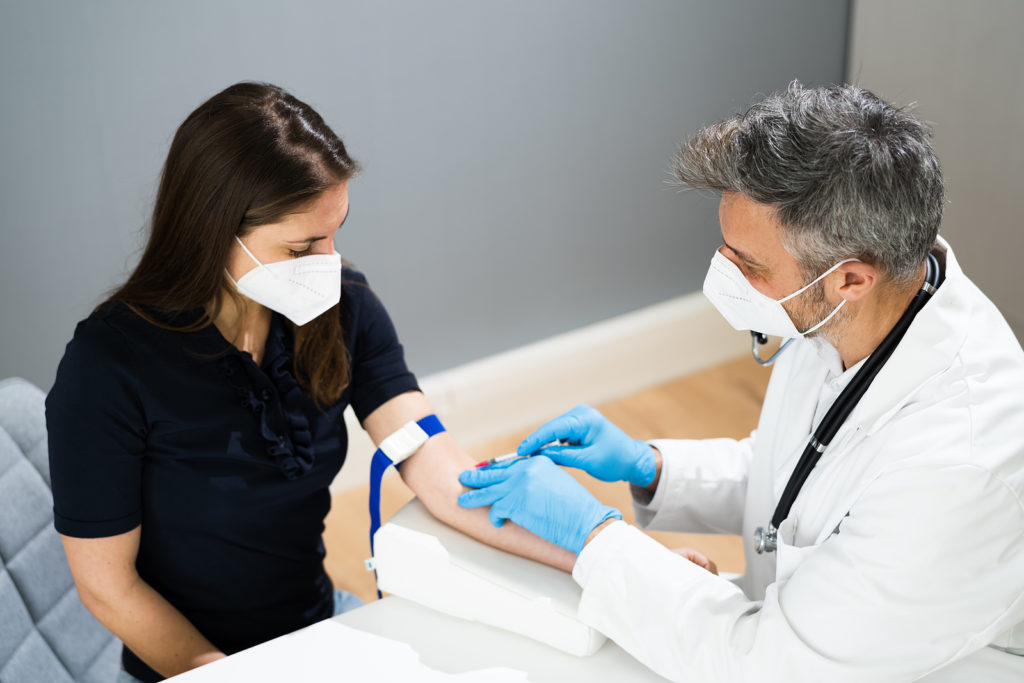Steps to Becoming a Phlebotomist
Phlebotomists draw blood from patients for transfusions, research, blood donations, and tests. These professionals work in diagnostic laboratories, medical centers, hospitals, and doctor's offices. According to the U.S. Bureau of Labor Statistics, the average income for phlebotomists in the United States is approximately $37,000. Employment opportunities for phlebotomists are projected to grow by 10% per year through 2031. This is much faster than typical occupations. By choosing the right phlebotomy training programs, students can get the training they need to care for patients and collect blood for potential employers.
Step-by-Step Guide to Becoming a Phlebotomist
To become a phlebotomist, it’s important to find an accredited school and meet all eligibility requirements. After completing their education, phlebotomists must earn and maintain their certification. Keep reading for all the details, broken down step by step.
Step 1: Finding a Phlebotomy Training Program
Students should look for colleges and universities that have national and regional accreditation. Nationally accredited agencies accredit institutions such as vocational, career, and technical schools. Regional accrediting agencies evaluate schools in their geographic region to ensure that they live up to the highest standards of academic rigor. Students can look up the accreditation status of colleges and universities through the Department of Education or the Council for Higher Education Accreditation (CHEA). The National Phlebotomy Association (NPA) accredits schools offering phlebotomy courses. NPA accreditation recognizes that an accredited institution lives up to content and quality standards set by the organization.
Education programs for phlebotomy take from 8 weeks to one year to complete, depending on how the program is set up. Students who want to obtain their phlebotomy certification quickly may choose vocational schools. Community colleges offering phlebotomy diplomas may take up to a year or longer to complete. It’s important to complete both instructional and clinical hours, graduate from a certificate program, and receive a diploma. Prospective employers typically require proof of completion of an accredited phlebotomy program.
Students can choose traditional classroom or online courses, as well as hybrid options that allow students to complete their coursework online and attend clinical hours at a qualified location. Vocational schools and community colleges typically offer phlebotomy courses. Students can expect to pay between $500 and $2,000 to complete their phlebotomy program. Examples include the National Phlebotomy Association (NPA), which offers a phlebotomy certificate students can complete in 26 weeks, including a 220-hour externship. The cost of this program is $1,680.
- Alabama
- Alaska
- Arizona
- Arkansas
- California
- Colorado
- Connecticut
- Delaware
- Washington, DC
- Florida
- Georgia
- Hawaii
- Idaho
- Illinois
- Indiana
- Iowa
- Kansas
- Kentucky
- Louisiana
- Maine
- Maryland
- Massachusetts
- Michigan
- Minnesota
- Mississippi
- Missouri
- Montana
- Nebraska
- Nevada
- New Hampshire
- New Jersey
- New Mexico
- New York
- North Carolina
- North Dakota
- Ohio
- Oklahoma
- Oregon
- Pennsylvania
- Rhode Island
- South Carolina
- South Dakota
- Tennessee
- Texas
- Utah
- Vermont
- Virginia
- Washington
- West Virginia
- Wisconsin
- Wyoming
Step 2: Admissions and Eligibility Requirements
It’s important to remember that each school has its own admissions and eligibility requirements. Therefore, prospective students will need to reach out to the school to see whether they qualify for admission. Most schools don’t require any previous experience in the field. Typical basic admissions requirements may include:
- Minimum age of 18
- High school diploma or equivalent
Other requirements, including immunization records, criminal background checks, etc., may also be required, which is why it’s imperative to check your preferred school’s enrollment requirements thoroughly.
Step 3: Phlebotomy Certification & Maintenance
Certification and maintenance considerations vary depending on the state and where students obtained their certification. For example, the NPA requires candidates to pass a certification exam and show proof of successful completion of an accredited phlebotomy program with clinical hours. Graduates must complete the following to receive their certification:
- 16 continuing education units
- 160 hours of lecture
- A minimum of 200 hours of practical experience
Additionally, NPA phlebotomists complete continuing education requirements every two years to maintain their certification.
Paying for a Phlebotomy Training Program
Most colleges and schools offer financial aid for phlebotomy training programs. Learn everything you can about different types of assistance.
Student Loans
Filling out the Free Application for Federal Student Aid (FAFSA) gives students access to four-year programs. Since most phlebotomy courses are less than one year long, this is only an option for students who want to obtain their phlebotomy certification along with a four-year degree. You may also be able to obtain a loan from your local bank or credit union.
Scholarships
The internet is a great resource for all kinds of scholarship programs. Businesses and other organizations also offer scholarships. For students who work in health care, it’s worthwhile to ask your current employer if they offer scholarships for phlebotomy.
Work Reimbursement
Some employers offer tuition reimbursement programs. If you are already a Certified Nursing Assistant (CNA) or work for an employer with a work reimbursement program, they may pay for all or part of your phlebotomy training courses.
Cash/Savings
Since phlebotomy classes are relatively inexpensive, many students pay for their courses out of pocket.
Payment Plans
Students must contact schools directly to see if they offer payment plans. Many schools require full tuition payment at the beginning of classes. Others may allow students to defer a portion of their tuition for a few weeks or a few months or pay a set monthly fee. Typically, if students haven’t paid for their tuition, they will not receive their diploma or certificate.
Loans
Taking out loans with a private organization or government agency can help students get the help they need to pay for phlebotomy training programs.
